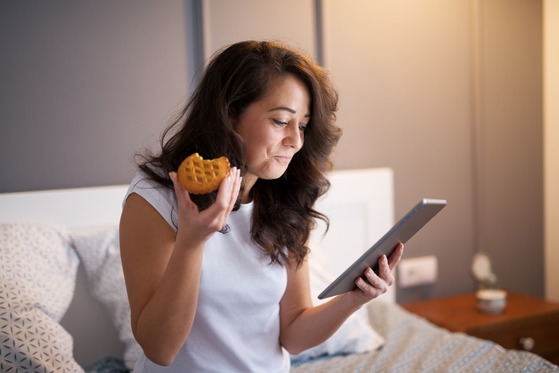Welcome to Thomas Insights — every day, we publish the latest news and analysis to keep our readers up to date on what’s happening in industry. Sign up here to get the day’s top stories delivered straight to your inbox.

For years, the wellness lifestyle was seen as hard to attain — and even harder to maintain. It was perceived as only accessible by activities like exercise, practicing meditation, or yoga. Recently, people have come to understand quality rest and a good night’s sleep are a key part of wellness, leading to an increase in people looking to invest their sleep.
Why Are People Trying to Get More — and Better — Sleep?
In January 2020, YourStory predicted sleep would be one of the year’s biggest health trends. Philips recently published their annual Global Sleep Study, which notes that across the world people see sleep as a large factor in health and wellness. 60% of people surveyed responded they were interested in getting better sleep. While those who were surveyed clearly saw the importance, they were less likely to actively create a better night’s sleep.
What Are People Doing to Get to Sleep Easily?
With the advent of the COVID-19 pandemic, there was a renewed interest in sleep. Mattress retailers have reported a spike in sales since March. Pinterest’s Pinsights announced people have been looking for ways to improve their wellness and Gen Z pinners specifically have been searching to create a calm bedroom environment.
The Philips study did acknowledge people are not actively cultivating better sleep habits but did note 15% of people use marijuana and CBD oils to get better sleep, indicating there is a growing market for those who want to participate in the most passive wellness activity.
Dreamy Foods and Drinks
According to WGSN, a trend forecasting company, there is an increase in food and drink products created with sleep in mind, in response to consumer demand. WGSN has observed several trending ingredients in such products: botanicals like valerian root, lavender, and chamomile; melatonin-laden sour cherries; and L-theanine, an amino acid used to encourage drowsiness.
The majority of these products focus on a blend of the aforementioned components. For example, Nightfood, a sleep-catering ice cream brand that claims it has less caffeine and sugar than traditional ice cream uses ingredients like casein proteins, magnesium, and L-theanine to stir up sleep. Nestle’s Goodnight Food, a chocolate bar, similarly contains L-theanine, magnesium, and casein proteins. FoodDive reported PepsiCo is launching Driftwell, a functional water drink focused on relaxation and sleep, containing 200mg of L-theanine.
With the continued global stress, the trend of food and drink products that prioritize sleep induction will likely continue to rise. In the face of adverse circumstances, the drive and desire for health and wellness remains, leading the market to innovate solutions and consumers to search for new ways to create better sleep, outside of counting the proverbial sheep.
Image Credit: Dusan Petkovic / Shutterstock.com


